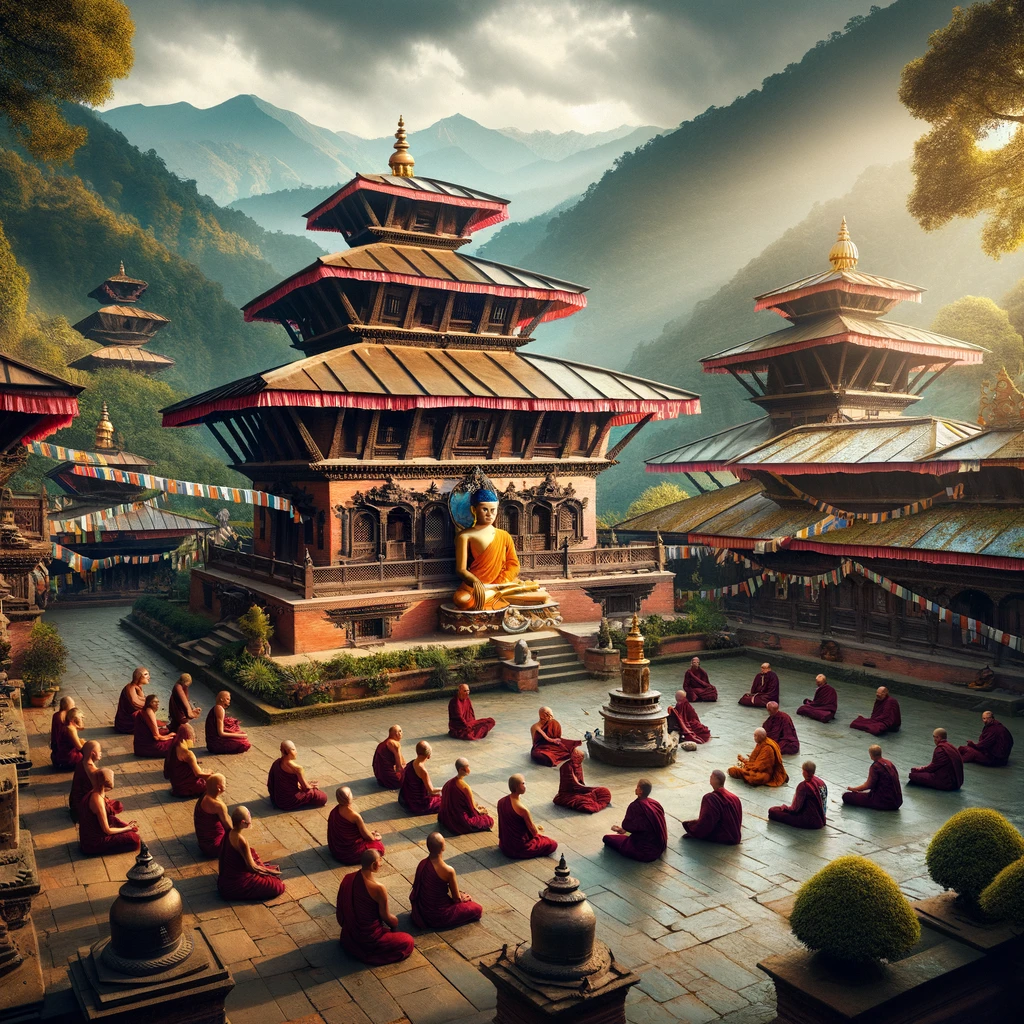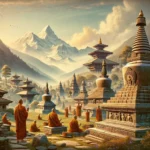The History of Buddhism in Nepal begins from birth of the Buddha. Shortly after his Enlightenment, the Buddha started teaching people and established a monk’s community in Gangetic plain, (Mahavagga, Vinayapitaka) at present, the nothern India and Southern Nepal. Later he founded the places where he himself and his follower monks lived. In the course of time several hundreds of thousands of monks joined the community of the Sangha. Later the nun or Bhikkhuni’s community was also formed. The monk’s and nun’s role and primary business was to practice the Buddha’s teachings and propagate them among the people by different means. Monasteries also increased accordingly and played a significant role in propagation of the Dhamma. Apart from being places of accommodation for monks and nuns the monasteries were also functioned as gathering points for the lay people on various occasions. The numbers of lay followers of Buddha were many times greater than the monks and nuns. The Buddha, Dhamma, Sangha and other all apparatuses commonly discussed in heading of Buddhism.
As we all well know the Buddha (Siddhartha Gautama), the founder of Buddhism, was born at Lumbini in present-day Nepalese territory, and very early on in its history, then, important Buddhist events occurred at the southern plain of Nepal. There are many references in the Pali literature of Buddhist activities held in and around Kapilavatthu, the Buddha’s home town.
Pali sources records some famous Buddhist monks and nuns from Kapilavatthu in the Buddha’s time. Among them five ascetics led by Venerable Kondanna listened to the Buddha’s the first sermon. Venerable Ananda, Devadatta, Bhaggu, Anuruddha, Kimbila and Upali were also among the famous monks of this time who hailed from the Buddha’s native city. The first novice Rahula Buddha’s half brother Venerable Nanda, a personality chosen by scholars for their literary works, Buddha’s step mother Mahapajapati, the first nun,and the Buddha’s ex-wife Yasodhara, also were came from this place as well.
The Buddha gave many of his important discourses in Kapilavatthu, e.g., Buddhavamsa, Attadandasutta, Culadukkhakhandhsutta, Sekhasutta Dakhinavibhangasutta, etc. Several Jataka tales were also told there, namely Vessantara, Mahadhammapala, Candakinnari Phandana, Daddabha, Latukika, Rukkhadhamma, and Vattaka. It was in the second year of his enlightenment that the Buddha first returned to Kapilavatthu.
There were some monasteries at kapilavatthu such as Niggodharama and other monasteries. Kala-Khemaka and Ghataya Sakyas, the famous lay followers of the Buddha, built cells for the monks in the Niggodharama. The monasteries functioned as centers for propagation of the Dhamma and as gathering places as well for the Buddhist lay community. These monasteries contained various sorts of utility areas such as private rooms, meeting halls, bathrooms, waiting room, ponds, walking meditation paths, avenues and public rest houses which were suitable places to practice the doctrine. Due to the lack of epigraphic proof, we must depend on legendary accounts in order to reconstruct and understand the history of the Buddha’s time. The epigraphic evidence dates back only as far as the Asokan period that is to say 3rd century B.C.



